You've gone gluten-free - great! But now you're thinking: "how will I ever enjoy a plate of spaghetti again? And what about Pizza Friday's at my BFFs" ? No problem! I've got you. Read on for tips to get started with changing your regular recipes into gluten-free recipes!
Here's the good news: making your favorite recipes fit into your gluten-free diet doesn't mean you're gonna have to give up all your favourite foods.
No way🙅♀️
With a few simple changes and a good understanding of some key gluten-free ingredients, you can still eat how you want, switch to a gluten free diet AND bring rockstar dishes to the next potluck that everyone will want to dig into (and your friends won't care or notice if they're gluten-free).
Let's do this🙋♀️
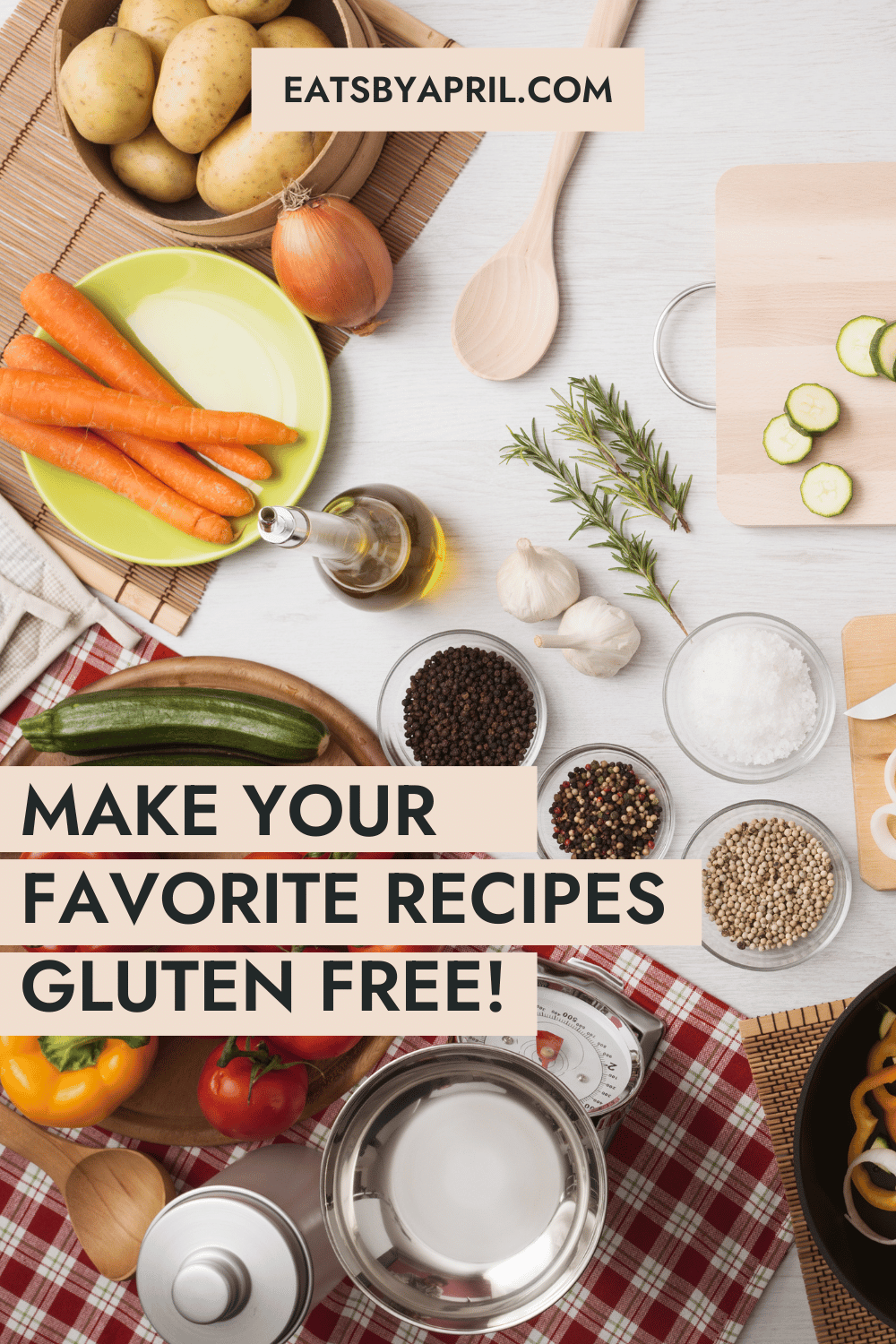
Jump to:
🍞What's Gluten?
First things first: let's be clear on what gluten is and why you might need to avoid it.
Gluten is a protein found in wheat, barley, rye, and related grains.
Gluten gives dough its elasticity and that chewy texture in baked goods. (One reason why gluten free muffins or bread don't rise or have that pull-apart texture without a secret ingredient. More below.)
For many people, eating gluten doesn't cause a problem.
But, if you have with celiac disease, non-celiac gluten sensitivity, gluten intolerance, or wheat allergy, eating gluten can result in a whole range of health issues - from gastrointestinal to autoimmune reactions.
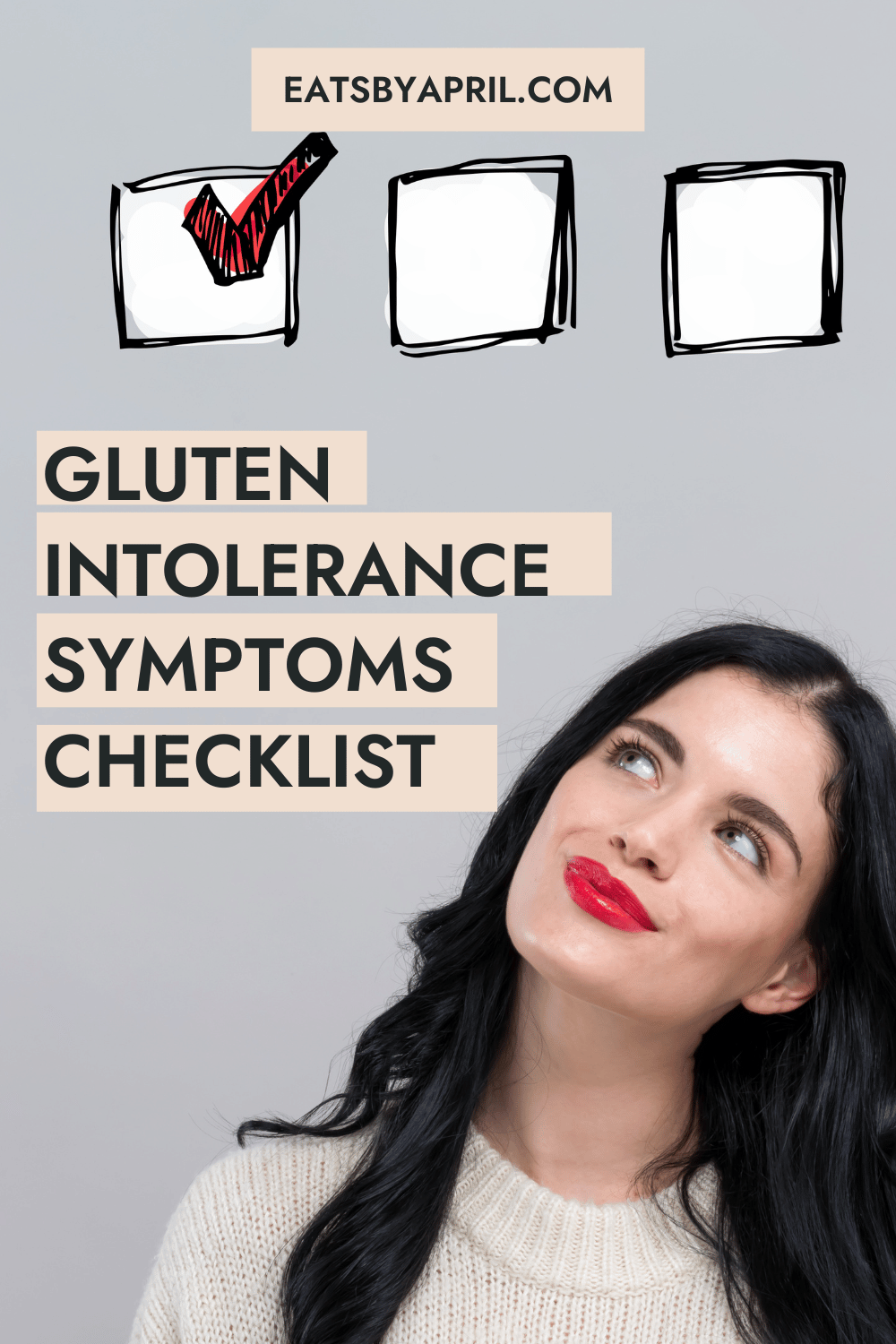
So if you're 100% committed to a gluten-free diet, you'll have to avoid any sources of gluten - sneaky or obvious.
That means not only choosing gluten-free foods and ingredients but also being careful about cross-contamination in your kitchen.
Let's start with some basics✅
🔪Basic Principles of Gluten-Free Cooking
Choose Gluten-Free Ingredients
A good place to start is with naturally gluten-free grains like quinoa, rice, millet, buckwheat, and certified gluten-free oats.
And although not a "grain", potatoes will be your new BFF, along with naturally gluten-free rice.
Here's some recipes that feature naturally gluten-free grains - all gluten-free and no one will know the difference!😄
Gluten-Free Flours
Then for flours, since you won't be using your regular wheat flour, you'll have to branch out and try different gluten-free flours.
I recommend starting with a gluten-free flour blend. These blends are specially made to act like wheat flour.
They typically have 3 or more different types of flour and have a pretty cool ingredient added - the "secret" ingredient: xanthan gum.
The xanthan gum replaces the job of gluten in baked goods when it comes to the elasticity and rising.
See below for a list of gluten-free flour blends to try.
There are a lot of other single ingredient gluten-free flours out there too.
You'll find flours like:
- Rice flour
- Almond flour
- Coconut flour
- Chickpea flour
- Potato flour
Really the list goes on and on. But here's the thing: baking with just ONE of the gluten-free flours can be tricky.
Because each flour has different protein, starch and moisture content, your almond flour muffins can turn into a big mess if you're not careful!
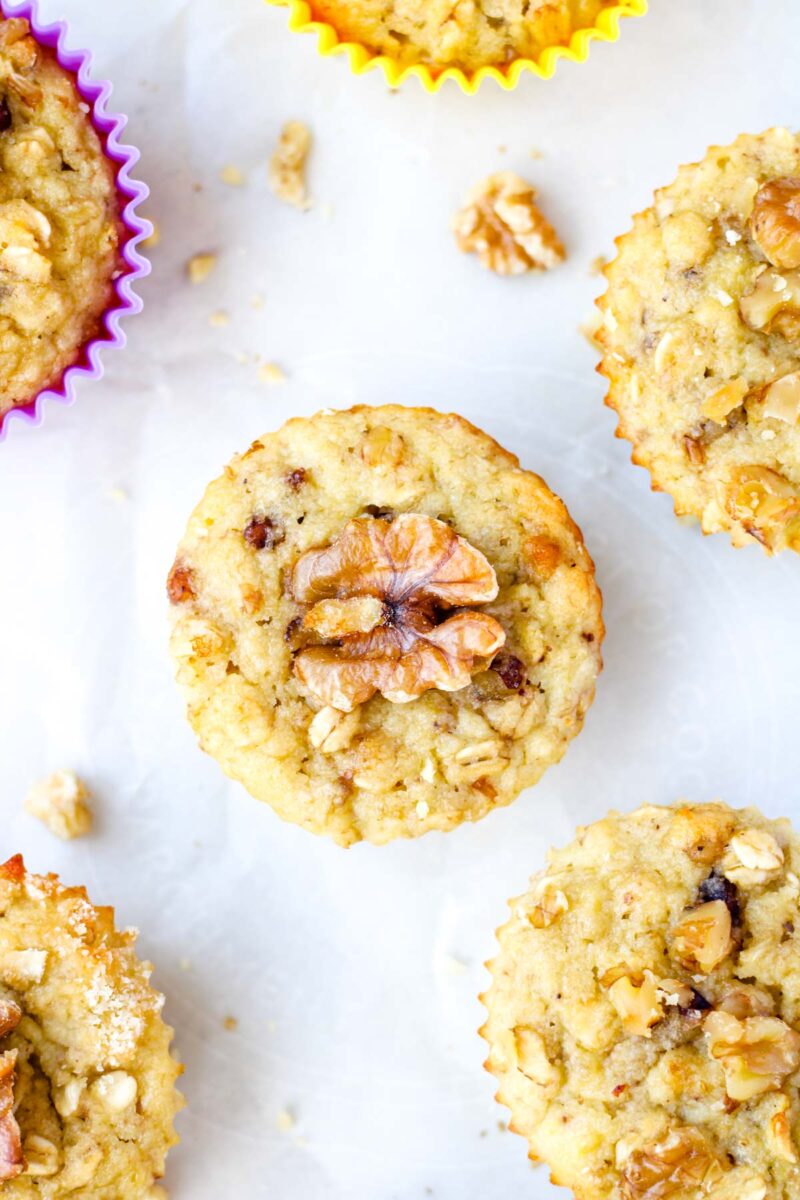
Sauces and Condiments
When it comes to processed foods, sauces and condiments, you just have to read the labels SO carefully to be sure you're avoiding gluten.
Anything processed can easily be a sneaky source of gluten.
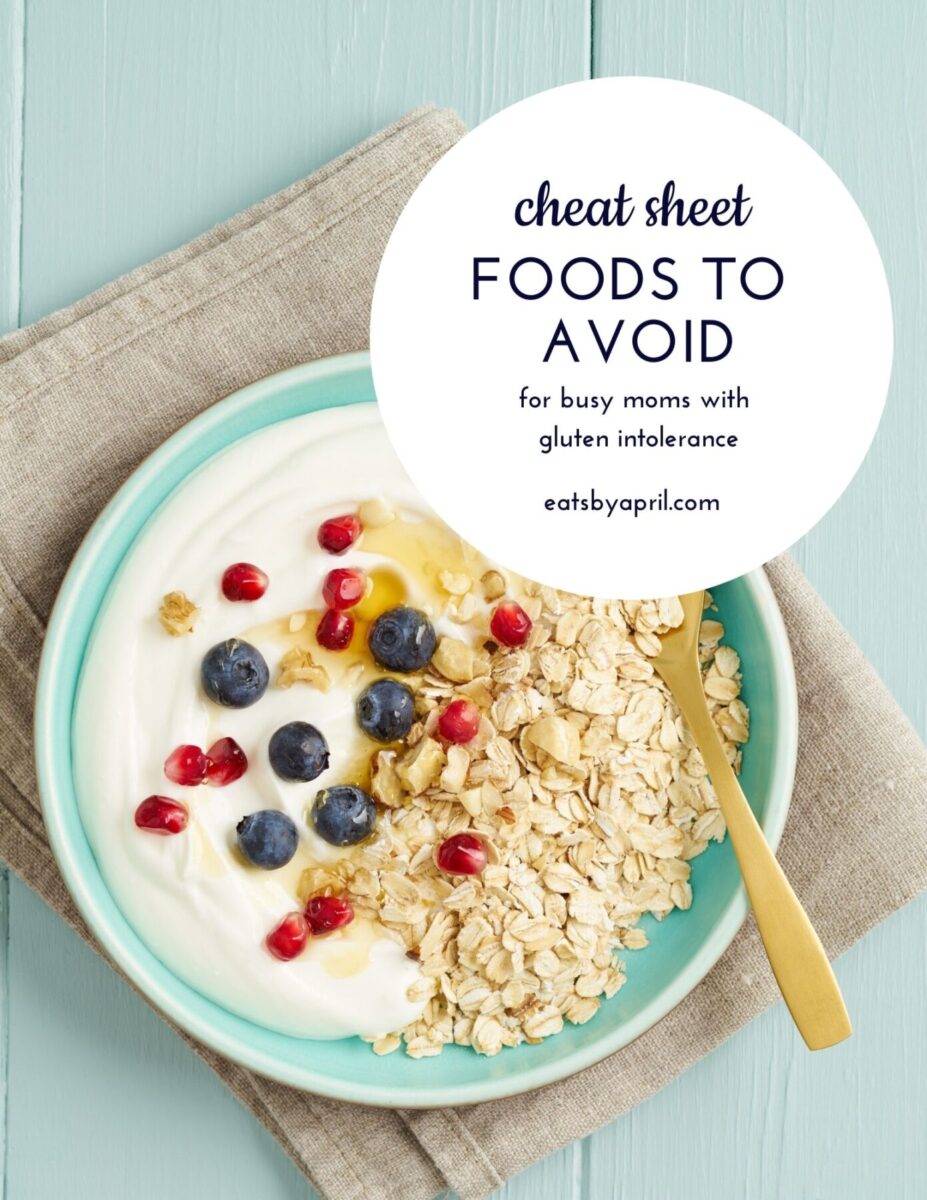
Read your food labels carefully! You can look for the allergen statement and see if it lists wheat. And you can also look for gluten-free certifications.
Use Gluten-Free Thickeners
So you're trying to thicken that gravy at Thanksgiving...what to use that won't contaminate the gravy?!
Luckily, most traditional thickeners like wheat flour can be easily swapped out for naturally gluten-free alternatives.
Try thickening with cornstarch, tapioca starch, arrowroot powder, or potato starch. These give very similar results to thickening with regular wheat flour.
Be Cautious with Baking Powder and Baking Soda
Double check baking power and baking soda labels. They should be labeled gluten-free. Some brands may contain trace amounts of gluten.
Experiment and Adjust as You Go
The first time I made my mom's famous Christmas cinnamon buns with gluten-free flour? Epic failure🤦♀️
But hey, when you're changing and adapting recipes to be gluten-free - especially baking recipes - expect some imperfection and experimentation.
You'll likely have to try different flours or ingredient combos until you get what you're looking for.
See below for more tips on gluten-free baking.
Check out these gluten-free muffin and bread recipes that are tested in my kitchen too.
Because if I can bake gluten-free successfully - so can you!
🔄Adapting Recipes for Your Gluten-Free Diet
Alright, basics covered!
Now, let's get into how to change up your current recipes to make them gluten-free.
🍰Baking
Tip #1
Now you know there are certain flours that act a lot like regular wheat flour.
So, for cakes, muffins, cookies, etc, replace the regular wheat flour with a gluten-free flour blend.
Here's a few great brands to check out:
- Bob's Red Mill 1-to-1 Baking Flour:
- This blend is like the superhero of gluten-free flours. No need to be a kitchen wizard – just swap it 1-to-1 for regular flour in your recipes. It's made from a mix of whole grain brown rice flour, sweet white rice flour, potato starch, sorghum flour, and tapioca flour.
- Cup4Cup Gluten-Free Flour:
- This one's a real game-changer. Developed by chefs at the Culinary Institute of America, Cup4Cup is a versatile blend made with cornstarch, white rice flour, brown rice flour, milk powder, and tapioca flour.
- King Arthur Gluten-Free Measure for Measure Flour:
- This one is a blend of rice flour, whole grain brown rice flour, tapioca starch, and potato starch.
- Pamela's Products All-Purpose Gluten-Free Flour Blend:
- Pamela knows her stuff when it comes to gluten-free baking. Her blend combines brown rice flour, tapioca starch, white rice flour, potato starch, and sorghum flour.
- Namaste Foods Organic Perfect Flour Blend:
- This blend is all about the good vibes. Namaste's mix includes sweet brown rice flour, tapioca starch, brown rice flour, arrowroot powder, and sorghum flour. It's a reliable choice of flours for your gluten-free baked goods.
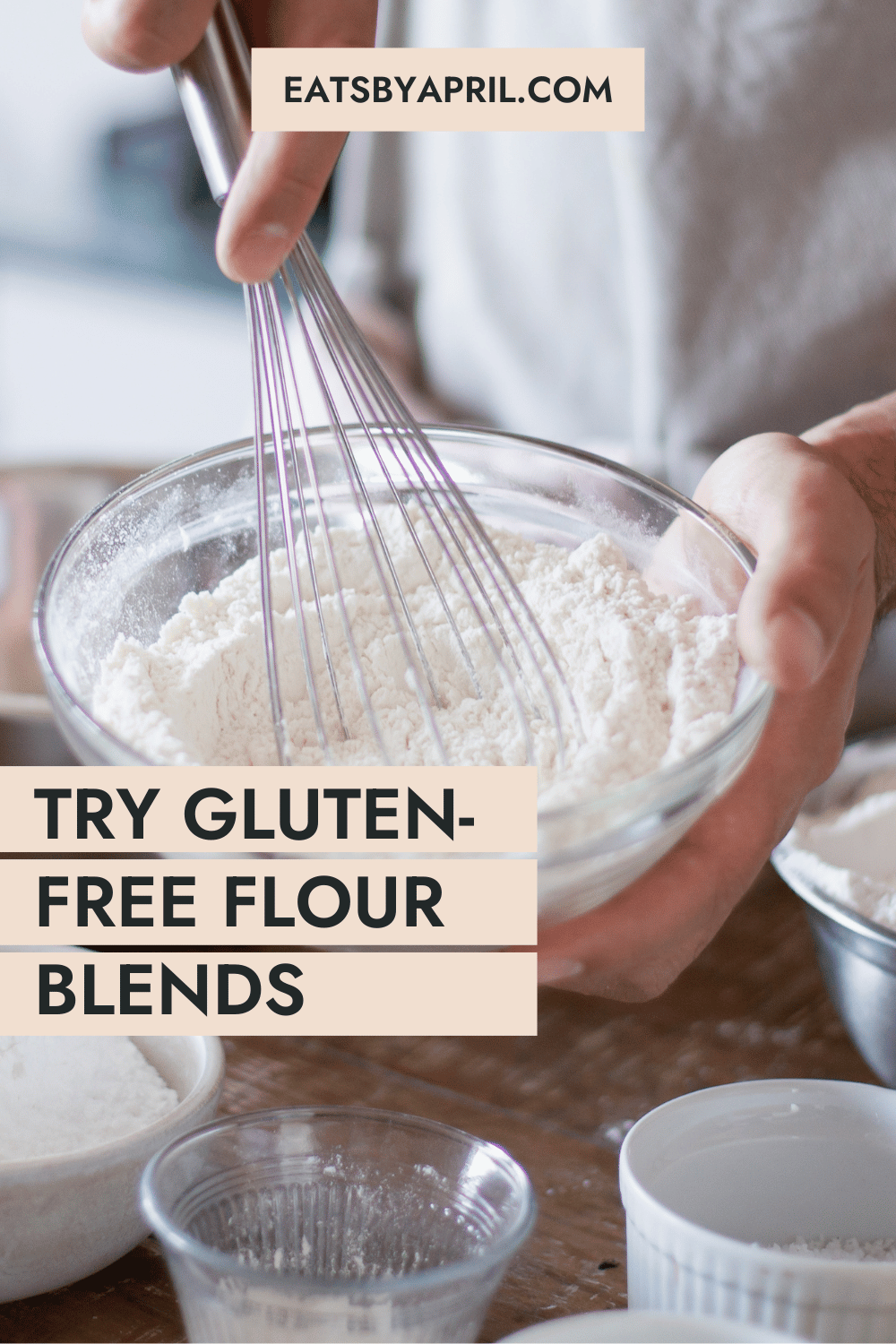
Bottom line: Go for a specialized blend of gluten-free flour for the best results🏅
Substituting one of these gluten-free flour blends for regular flour is one of the BEST ways to help make sure your muffins don't fall flat and that your pancakes stay fluffy.
Tip #2
Consider adding xanthan gum or guar gum to improve texture and binding in baked goods.
These help mimic the elasticity of gluten.
Many gluten-free flour blends already have the xanthan gum added so just read the label to be sure.
I picked up my xanthan gum on Amazon.
Tip #3
Start with ONE recipe to make gluten-free.
Whether it's your favorite muffins.
Your mom's famous cinnamon buns.
Or a biscuit recipe you've always wanted to try.
But just pick one recipe you want to make gluten-free and commit to figuring it out.
That's how I managed to turn these Healthy Banana Chocolate Chip Muffins from my mom's regular banana chocolate chip muffin recipe into a stellar gluten-free banana chocolate chip muffin recipe.
Tip #4
Here's a good example of what NOT to do: when I first started with gluten-free baking, I would just sub-in the WHOLE amount of regular flour for say almond flour or coconut flour.
Oi. BIG mistake.
Different flours have different textures, flavors, properties and moisture content.
For example, coconut flour is like a sponge. It really sucks up moisture in baked goods.
So if you just substituted coconut flour for ALL the regular wheat flour in a muffin recipe, you'd end up with a concrete-like batter☠️
More tips on baking with coconut flour here on my recipe for Coconut Flour Blueberry Muffins (gluten-free).
So instead of that: bring an expectation of experimentation!
When you're getting started with changing regular recipes into gluten-free recipes, try experimenting by substituting a portion of the regular wheat flour with a different flour.
Experiment by replacing a portion of the regular flour with almond flour, coconut flour, or oat flour. This will give you some experience with these different flours and add a flavorful twist to your recipes.
If the results are successful, you can give the fluffy baked goods to your non-gluten free neighbours.
And then take that same recipe and replace the remaining regular wheat flour with one of the 1:1 gluten-free flour blends above.
Tip #4
When making bread, use gluten-free bread recipes that are specially designed to rise and hold their shape without gluten.
And make sure any gluten-free flour blend you use contains xanthan gum - or another leavening agent.
You may need to invest in a good gluten-free bread mix or a bread machine.
Tip #5
Check the freshness of your leavening agents. Yes, baking powder and baking soda have expiry dates!
Both baking powder and baking soda can lose their ability to RISE baked goods over time.
The result? Muffins that are flat like pancakes and pancakes that are well, flatter.
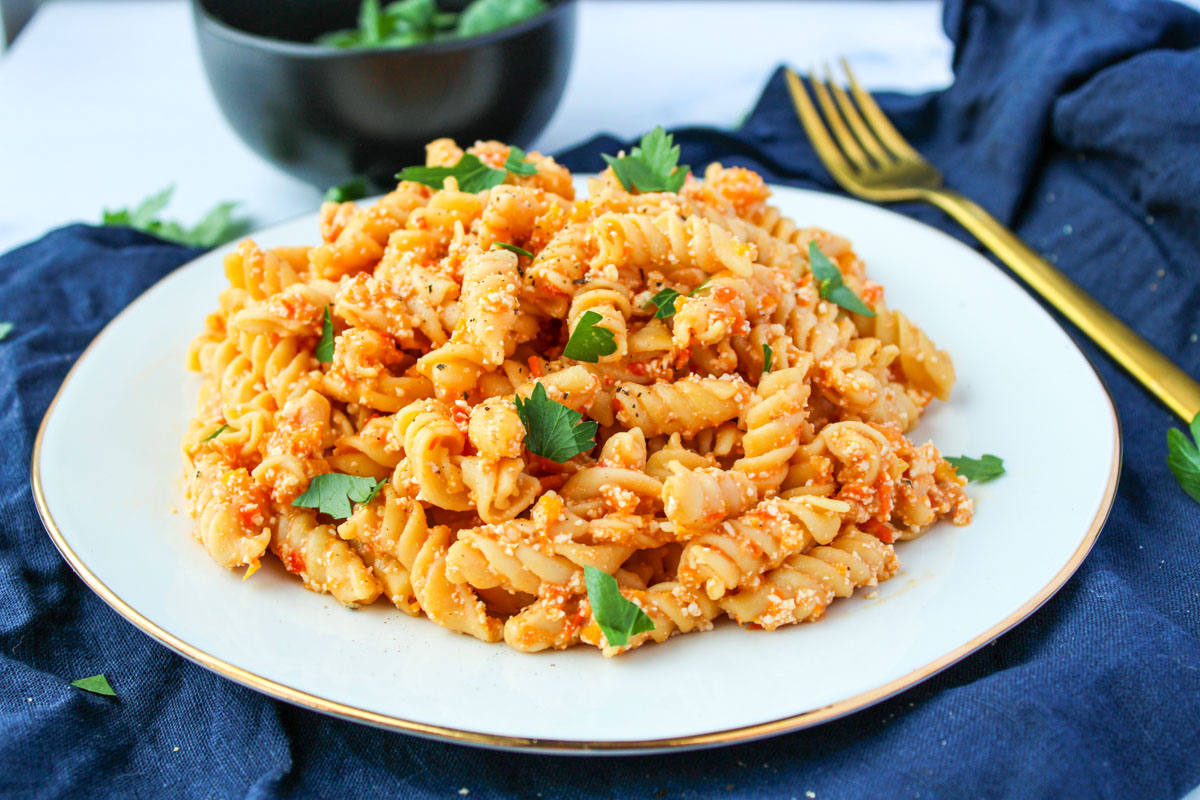
🍝Pasta and Noodles
Changing your favorite pasta recipe into a gluten-free pasta recipe is pretty easy these days.
Gluten-free pastas have come a LONG WAY in the past few years in terms of taste, acting like "regular" pasta in dishes and availability.
You can get gluten-free pastas at most major grocery store chains now.
In your favorite recipe, swap out regular wheat pasta for gluten-free pasta made from rice, corn, quinoa, or legumes.
Here's just a few brand name options to choose from:
- Barilla Gluten-Free Pasta:
- Barilla's gluten-free pasta is made from a blend of corn and rice, so it's just as al dente as the real deal.
- Ancient Harvest Organic Quinoa Pasta:
- Ancient Harvest's organic quinoa pasta brings a nutty flavor to your dinner table. Extra protein as a bonus too!
- Trader Joe's Brown Rice & Quinoa Pasta:
- Trader Joe's brown rice and quinoa pasta is a winning combo – it's hearty, it's wholesome, and it cooks up like a breeze.
- Tinkyada Brown Rice Pasta:
- Tinkyada's brown rice pasta is like the gluten-free champion of comfort food. Mac 'n' cheese, pasta salad, you name it – it holds up like a trooper in all dishes.
- Chickapea Organic Chickpea Pasta:
- Chickapea is changing the gluten-free game with their organic chickpea pasta. Packed with protein and fiber, it's like a superhero in pasta form. Watch for some extra foaming action when you boil up any pasta made from chickpeas - totally normal and to be expected.
Whichever kind of pasta you pick up, be sure to NOT overcook it - go for that al dente bite (slightly chewy) and avoid going mushy at all costs🚫
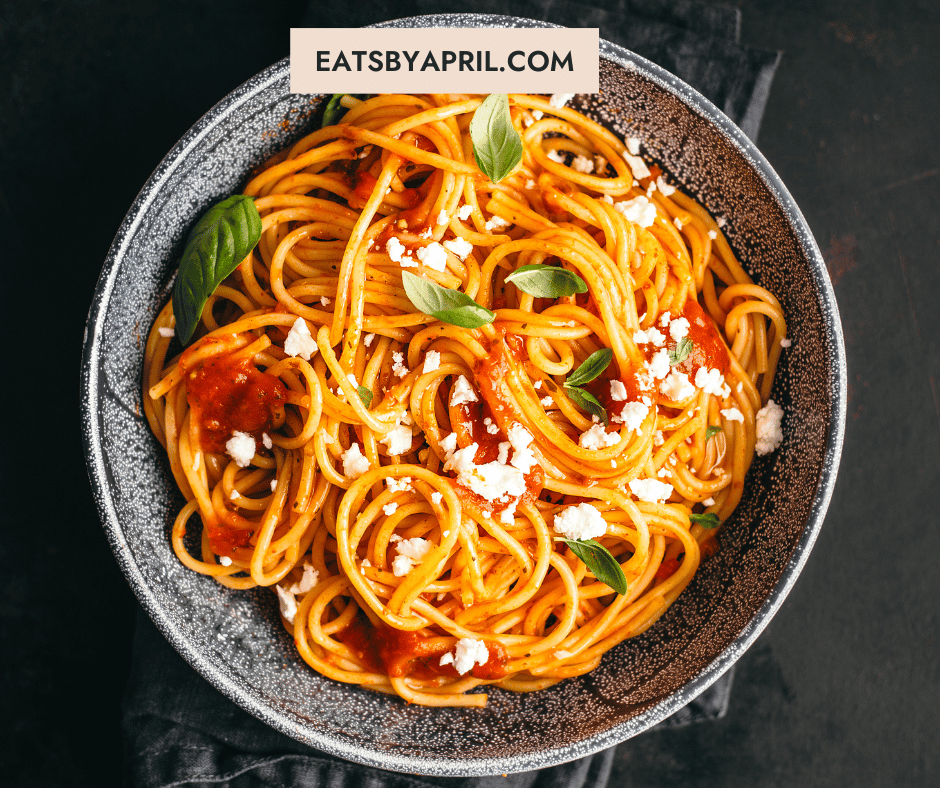
🥄Sauces, Gravies and Condiments
Want that thick gravy like you had smothering your mashed potatoes growing up - without all the gluten?
No problem-o.
When you need to thicken up sauces and gravies, use gluten-free starches such as cornstarch, tapioca starch, or potato starch.
Be sure to mix the starch with cold liquid before adding it to hot liquids to prevent lumps!
Pro Tip: Watch out for gluten hiding in soy sauce (very common!) and other condiments.
Read your labels VERY carefully and watch for the allergen statement that lists potential or certain allergens (such as gluten).

🍞Coating and Breading
When breading proteins like chicken or fish, branch out beyond the bland old bread crumbs!
Try these more creative options for gluten-free breading:
- Crunchy Almond Coating:
- Grab a bunch of almonds and turn them into your new favorite gluten-free breadcrumb alternate! Blitz them in a food processor until they're like golden nuggets of crunchy goodness. Coat your chicken or fish in these almond bits, and boom – you've got a nutty, crispy armor for your dinner.
- Crispy Crust:
- Raid the cereal stash in your pantry. Crush up a gluten-free rice krispie-like cereal into a coarse crumb, and suddenly you've got a gluten-free breading solution. Dip your chicken or fish in whisked-up egg, roll it in the crispy rice crunch, and bake it up.
- Parmesan Power Play:
- Grate some Parmesan cheese and mix it with your favorite gluten-free seasoning blend. Dip your chicken or fish into this cheesy magic, and let it transform into a crispy, flavorful masterpiece in the oven or on the stove. Nom nom😋This Cast Iron Skillet Chicken Breast uses parmesan for it's crispy coating.
- Coconut Crust:
- Take a tropical twist with shredded coconut! Mix it up with a bit of gluten-free flour, dip your protein into beaten eggs, then coat it in the coconut blend. Fry it up or bake it for a tropical protein at dinner. Keep the island vibes going and serve with this Coconut Lime Rice (Instant Pot)🍚
- Quinoa Crust:
- Quinoa isn't just for salads; it's a breading game-changer. Cook it up and let it cool, then use a food processor to make quinoa crumbs. Coat your chicken or fish with these tiny grains, and you'll end up with a crispy, gluten-free crust with the bonus of some protein and fibre too!
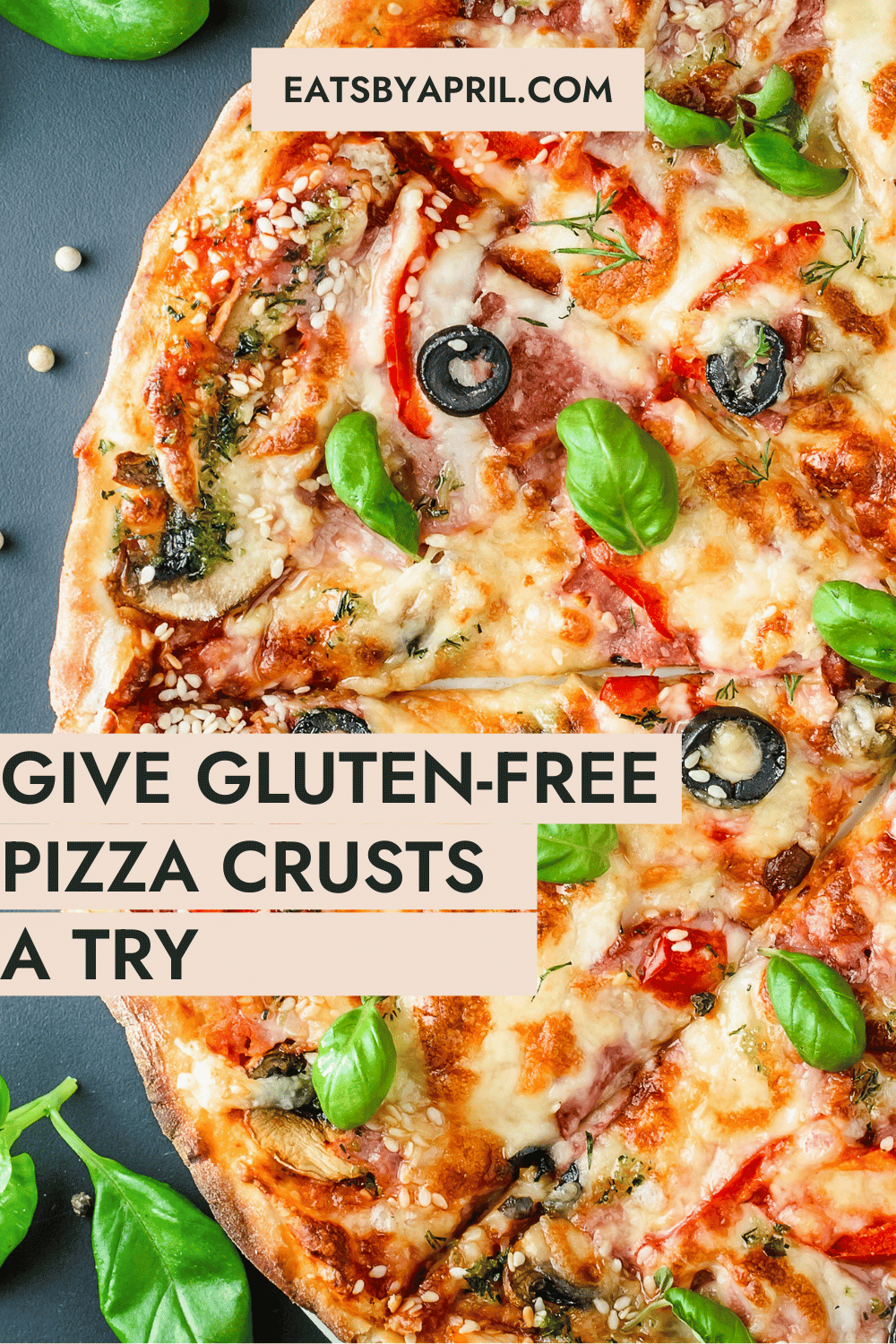
🍕Pizza
Check your grocery stores' frozen pizza aisle: you've got more gluten-free pizzas - and pizza crust options - than ever before.
Some pizza crusts are cauliflower-based and others are a blend of gluten-free flour.
Top your pizza with gluten-free sauce, cheese, and your favorite pizza toppings. Most typical pizza toppings are gluten-free (cheese, veggies, protein, etc.)
Just watch for meat: some processed meat can have added gluten as a binder or flavor enhancer.
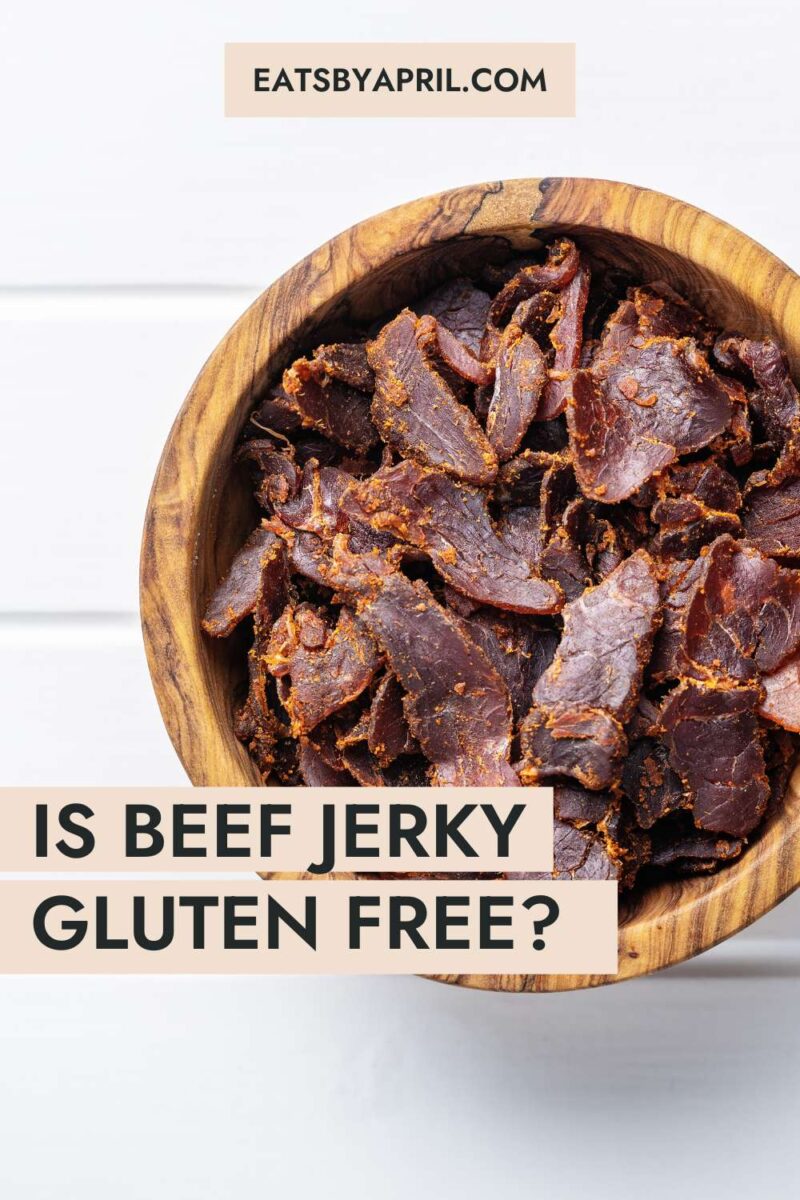
🍳Breakfast
The first meal of the day offers a TON of naturally gluten-free options.
Think fruit, yogurt, cottage cheese, eggs, bacon, etc, etc.
Here's some gluten-free breakfast recipes to get you started:
- Quinoa Flake Muffins with Chocolate Chips (Gluten-Free)
- Peanut Butter Coconut Energy Balls (no bake)
- Air Fryer Pumpkin Baked Oats Recipe
- Easy Baked Oatmeal with Peaches Recipe (gluten-free!)
When it comes to the starch or grain, that's where you need to pay a little more attention to be sure you avoid gluten.
Some other options are:
- Gluten-free oats for oatmeal or overnight oats (check labels to make sure the oats are certified gluten-free)
- Gluten-free bread for some avocado toast action🥑
- Craving some pancakes? Make them with gluten-free flour blends or look for gluten-free pancake mix
- Dry cereals without gluten are out there but as usual, check those labels. Some can be surprising - like the fact that Rice Krispies have gluten🤯
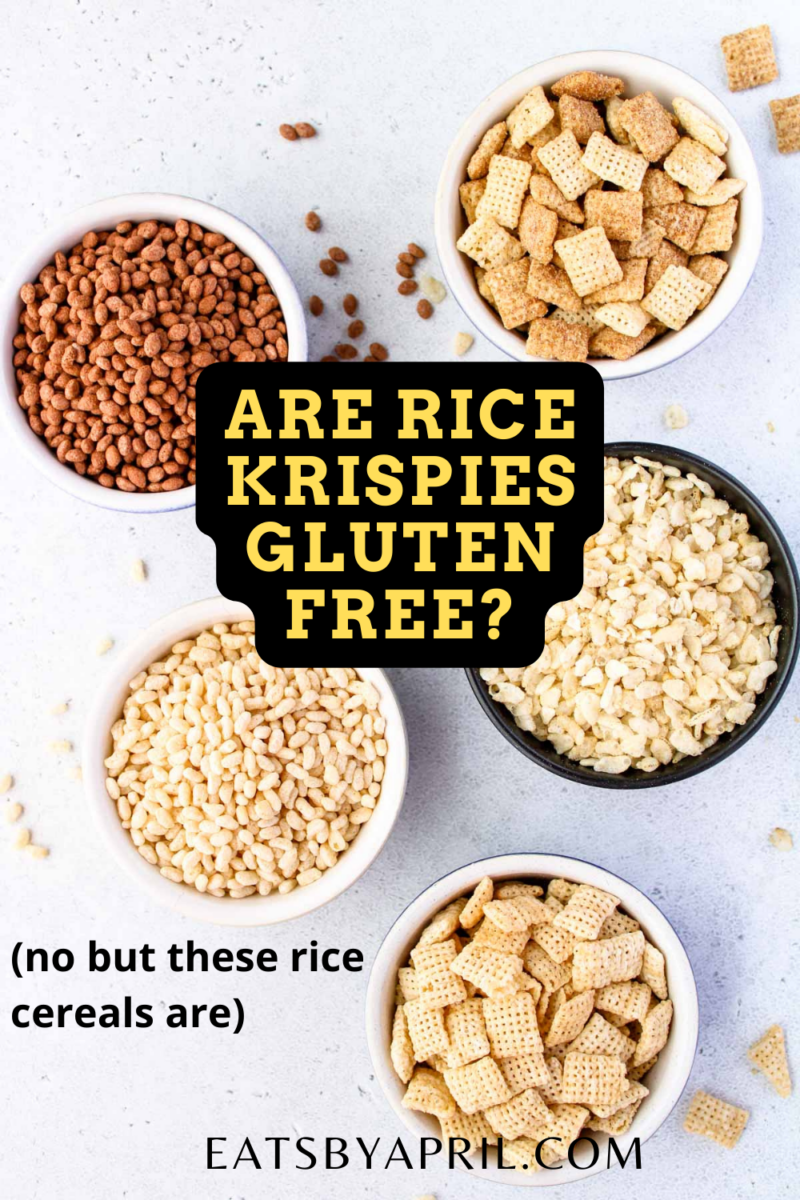
🥣Soups and Stews
When you're thickening soups and stews, go for cornstarch or arrowroot powder to give it some thickening instead of more traditional wheat-based thickeners.
Also, when you're using broth, be careful! Chicken broth can be a source of hidden gluten!
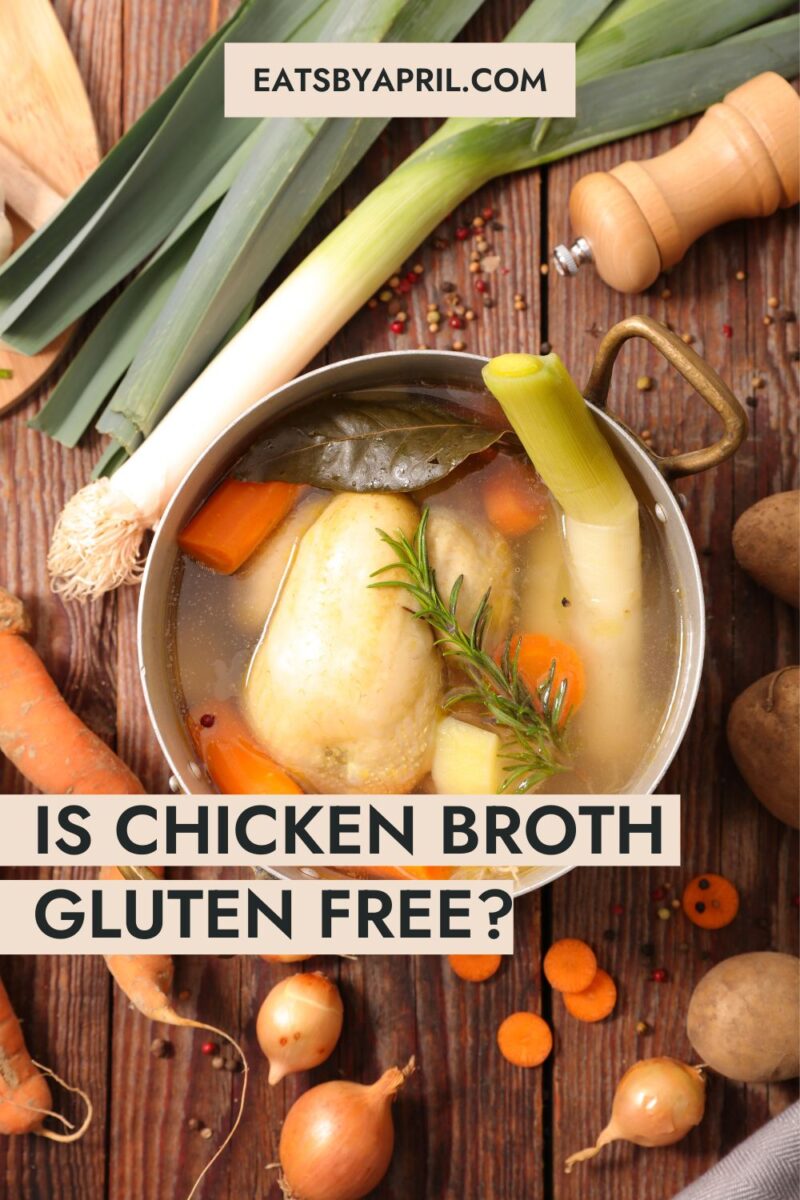
Make your own homemade stocks and broths because you can make those naturally gluten-free, and always, always check labels on store-bought broths.
🍨Snacks and Desserts
When you first go gluten-free, the dessert options seem to be few and far between.
It's like overnight all your favorite sweet-treats are suddenly off limits.
But I've got good news - gluten-free dessert are out there and they're delicious.
Here's a few gluten-free desserts to get you started. You can make some at home or check if the next time you eat out that the restaurant offers some gluten-free options:
- Flourless Chocolate Cake: Whip up a decadent chocolate cake without any gluten by using almond flour or other gluten-free alternatives. It's a rich and totally-worth-the-calories treat.
- Fruit Sorbet: Cool down with a fresh fruit sorbet. Pick your favorite fruits, blend them up, and freeze for cool and sweet gluten-free dessert.
- Chia Seed Pudding: Create a creamy chia seed pudding by mixing chia seeds with almond milk and your favorite sweetener. Let sit in the fridge for 5 hour or until firm. Top it off with fresh fruits or nuts for added flair.
- Gluten-Free Brownies: Bake up a batch of fudgy gluten-free brownies using a gluten-free flour blend.
- Banana Ice Cream: Blend frozen bananas into a creamy and smooth "ice cream." Top with add-ins like chocolate chips or nuts for some crunch.
- Almond Flour Cookies: Swap some of the regular wheat flour for almond flour in your favorite cookie recipe. The result is a nutty and eat-the-last-crumb gluten-free cookie.
- Rice Pudding: Cook up a comforting bowl of rice pudding using gluten-free grains. Add cinnamon or vanilla for extra warmth and flavor.
- Mango Sticky Rice: Make rice with coconut milk and top with slices of juicy mango. A yummy dessert with topical vibes🌴
Other gluten-free desserts
- Cherry and Peach Crisp with Oat Crumble (Gluten-Free, Healthy)
- 3-Ingredient Oatmeal Cookies
- Gluten Free Pumpkin Cookies
- Gluten-Free Apple Crisp (healthy recipe)
☠️Cross-Contamination Prevention
Ok you've found a gluten-free pasta brand you love; you're totally into rice cooked a thousand different ways; and all your pantry ingredients are safely gluten-free.
Nice work!🙋♀️
So what about other sources of gluten in your kitchen?
If you live with gluten intolerance or gluten sensitivity, you may not have to be concerned with a low risk of cross-contamination in your kitchen from gluten. This will depend on YOUR level of sensitivity to gluten in general.
However, if you - or someone you're cooking for - has celiac disease or a wheat allergy, you'll need to take these extra precautions to prevent even trace amounts of gluten from contaminating surfaces in your kitchen and other foods.
Here's a few tips to get started with preventing cross-contamination in your home:
Dedicate Utensils and Cooking Appliances
To prevent bread crumbs and other sources of gluten getting on gluten-free meals, you'll need separate food preparation tools and equipment.
Go for dedicated cutting boards, utensils, and kitchen appliances (toasters, bread machines, etc) for when you're doing gluten free food prep and cooking.
Clean Surfaces
Before you even start doing food prep, be sure to give everything a good wipe down.
Thoroughly clean countertops, stovetops, and all food prep and cooking surfaces before starting to make gluten-free meals.
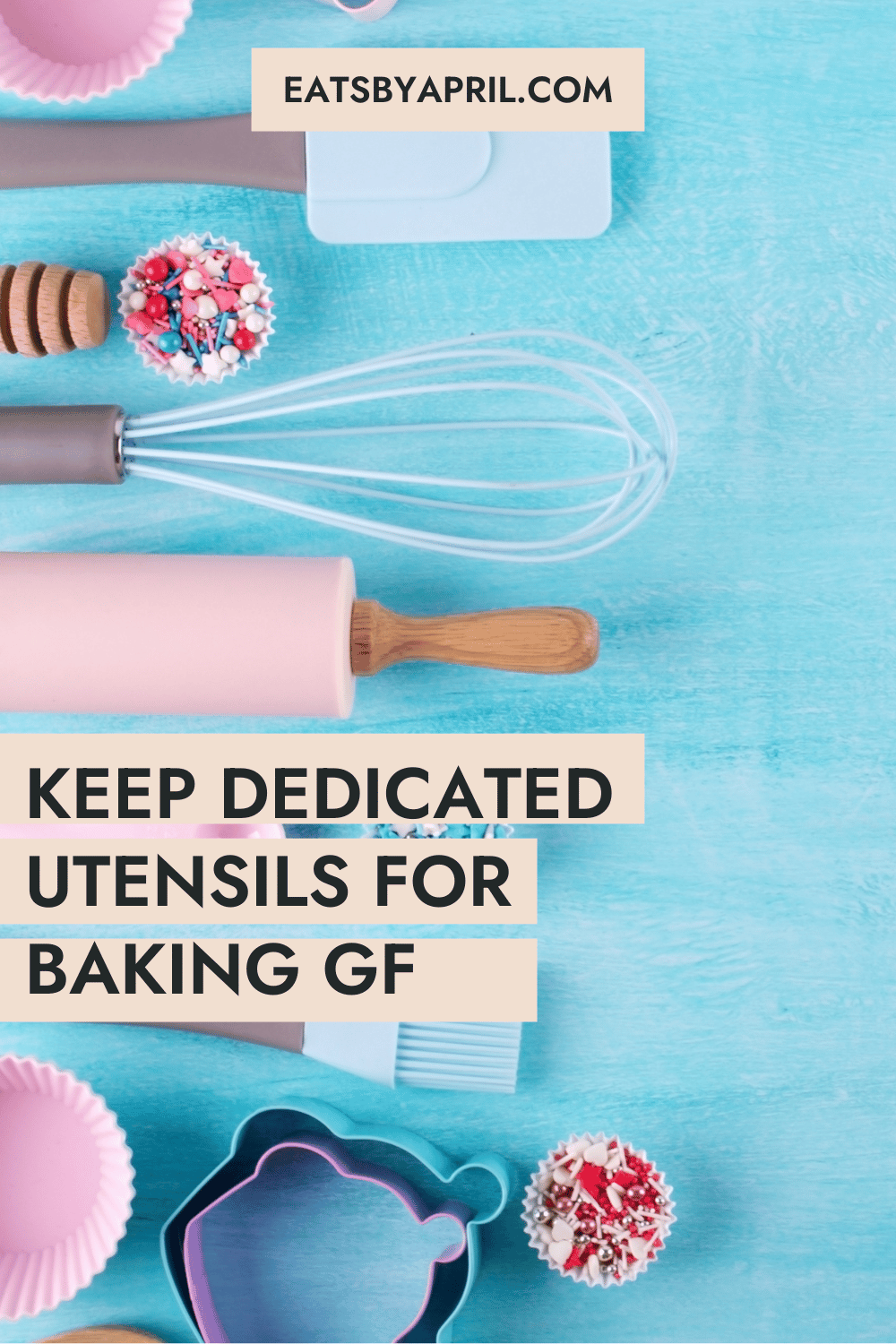
Label and Store Things Clearly
Make sure you can tell your gluten-free ingredients from your "regular" ingredients.
Clearly label gluten-free ingredients and if possible, store them separately from gluten-containing ones in your pantry and fridge.
Wash Your Hands
And the #1 thing to do before you start cooking food - wash your hands!
Especially if you're going back and forth between cooking a non gluten-free meal and a gluten-free meal, this is important. And it just makes good sense from a germ perspective😄
Alright - you made it! I truly hope this kick starts your gluten-free cooking journey.
Now I want to hear from you: What is the most important thing you need to do to make your recipes - and your kitchen - gluten free?
Let me know in the comments below!
~April
Want more?
Sign-up to get all the healthy and gluten-free recipes delivered straight to your inbox each week.
"*" indicates required fields

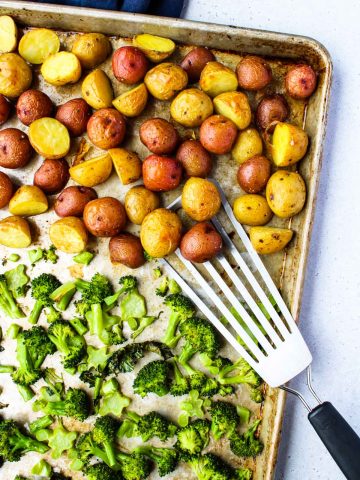
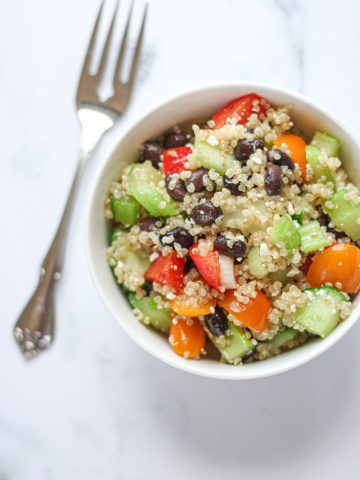
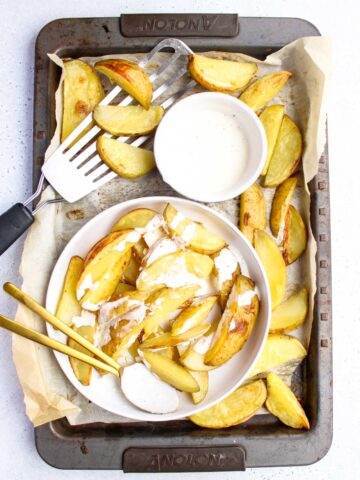
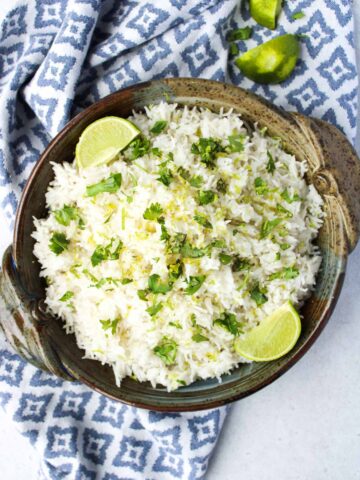
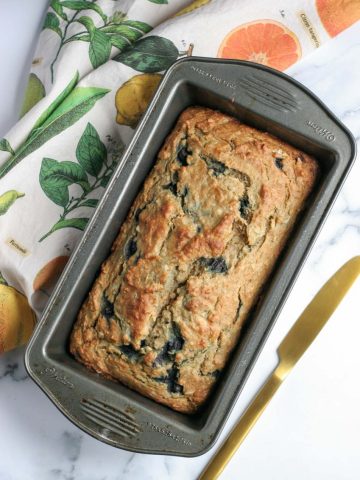
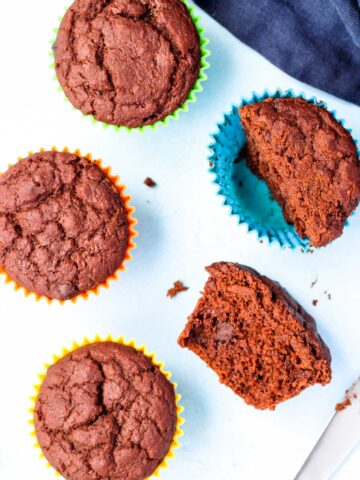
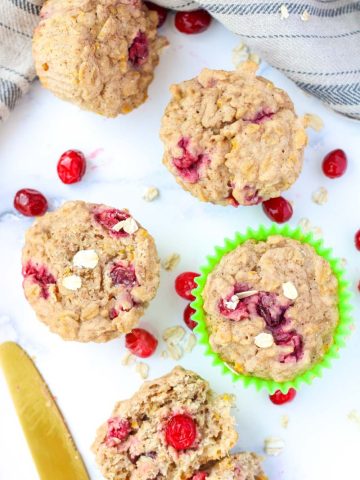
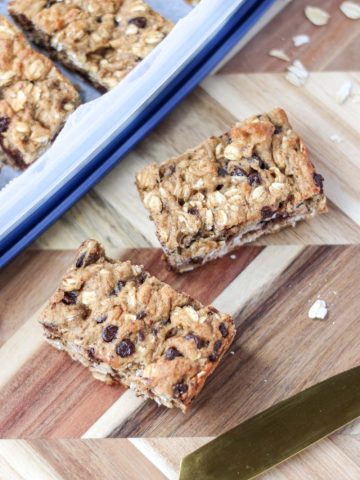
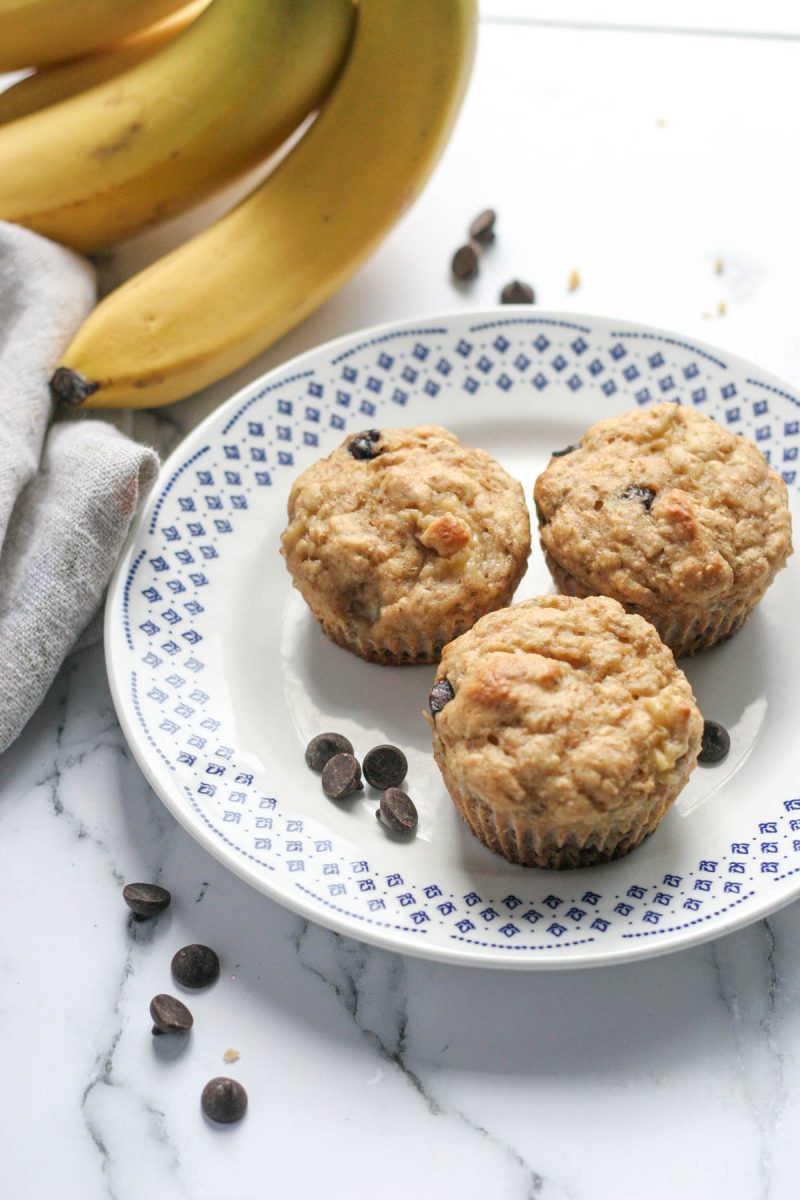
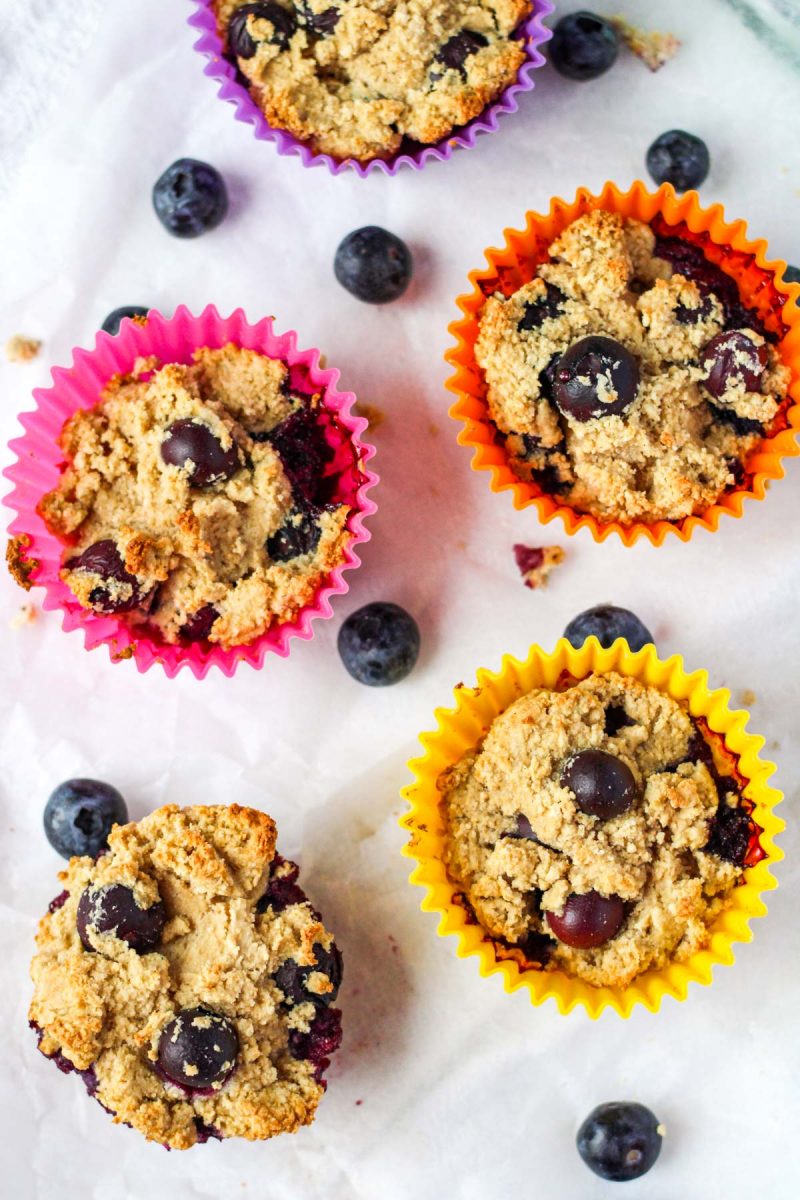
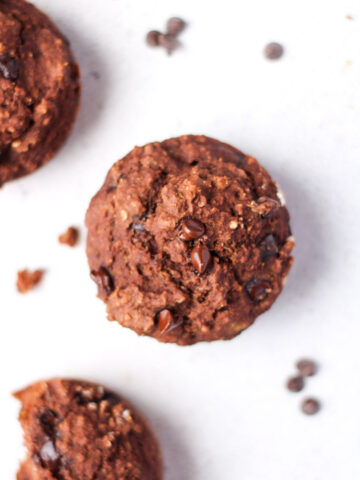
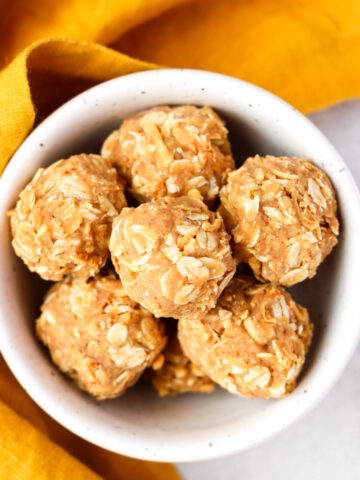
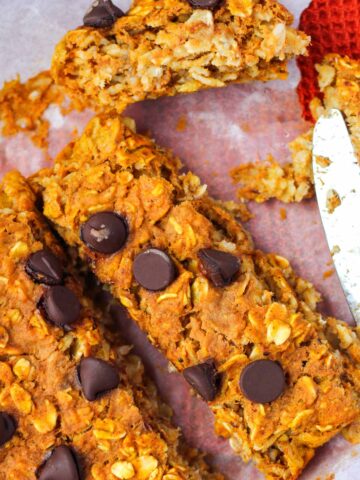
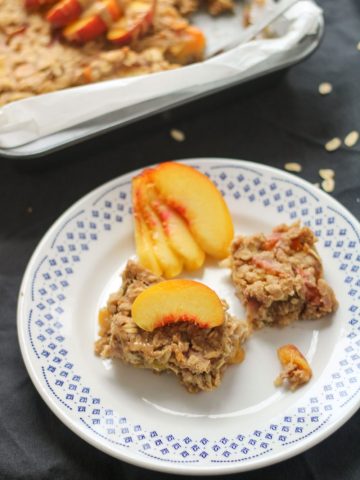
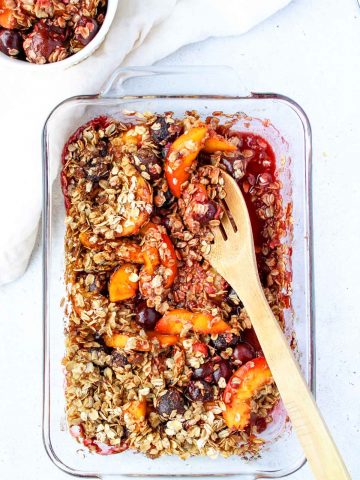
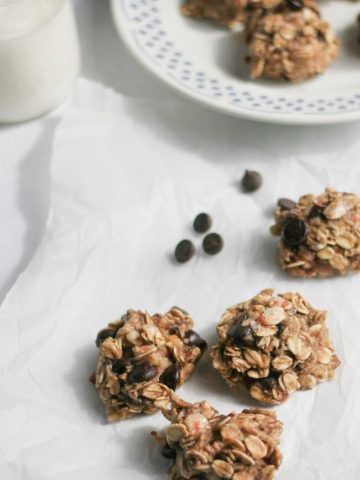
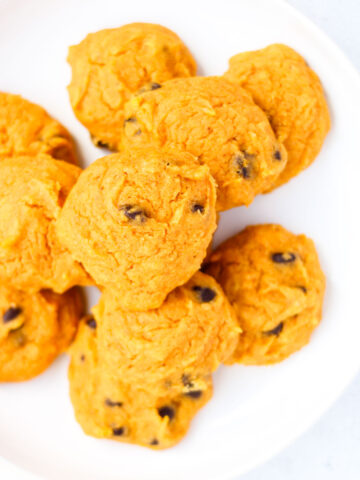
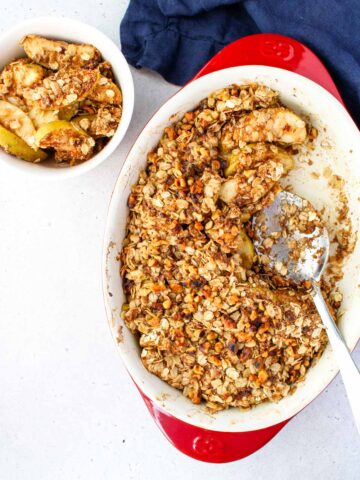
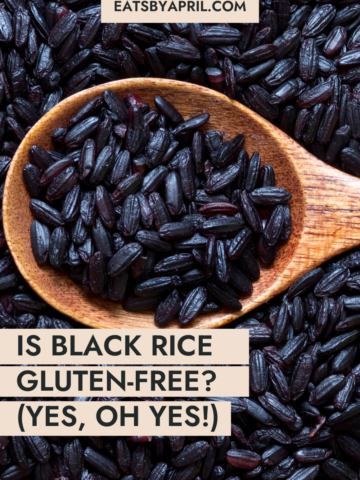
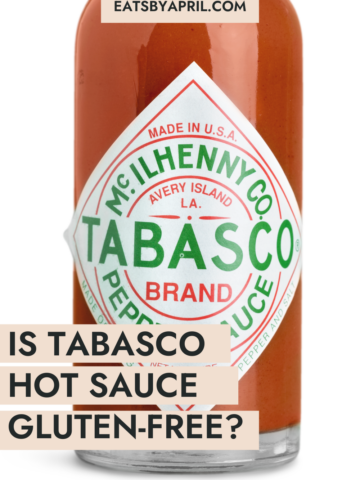
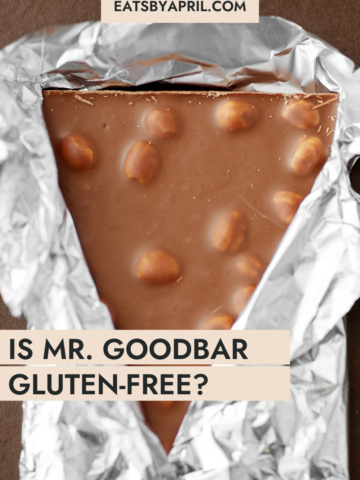
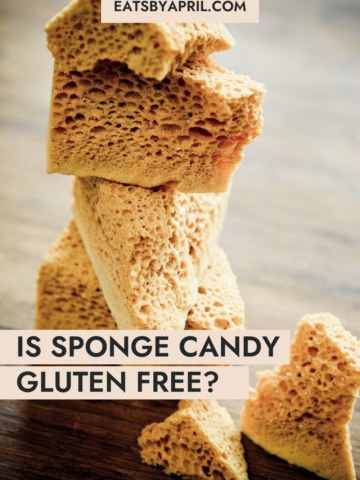
Comments
No Comments